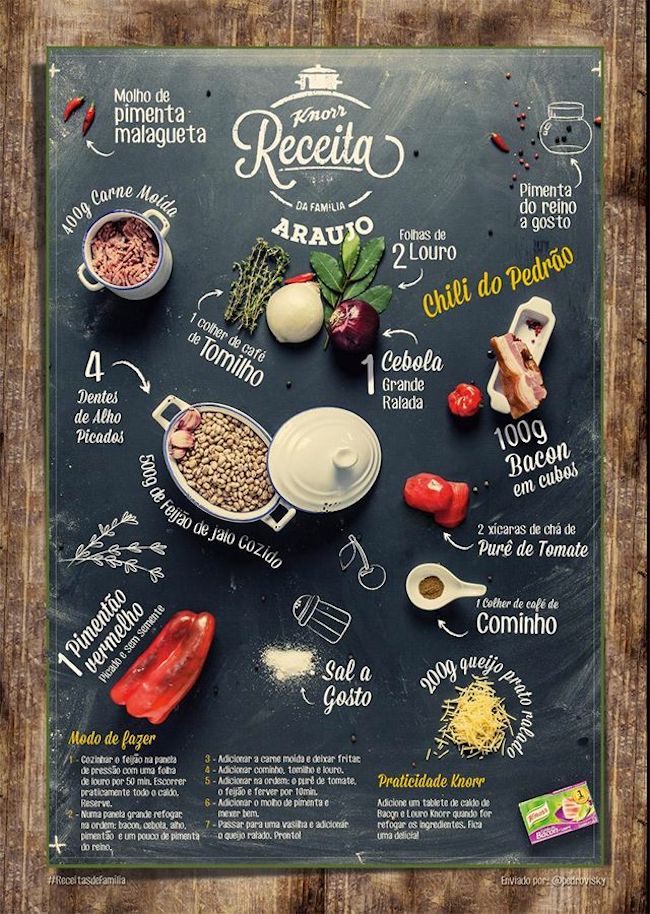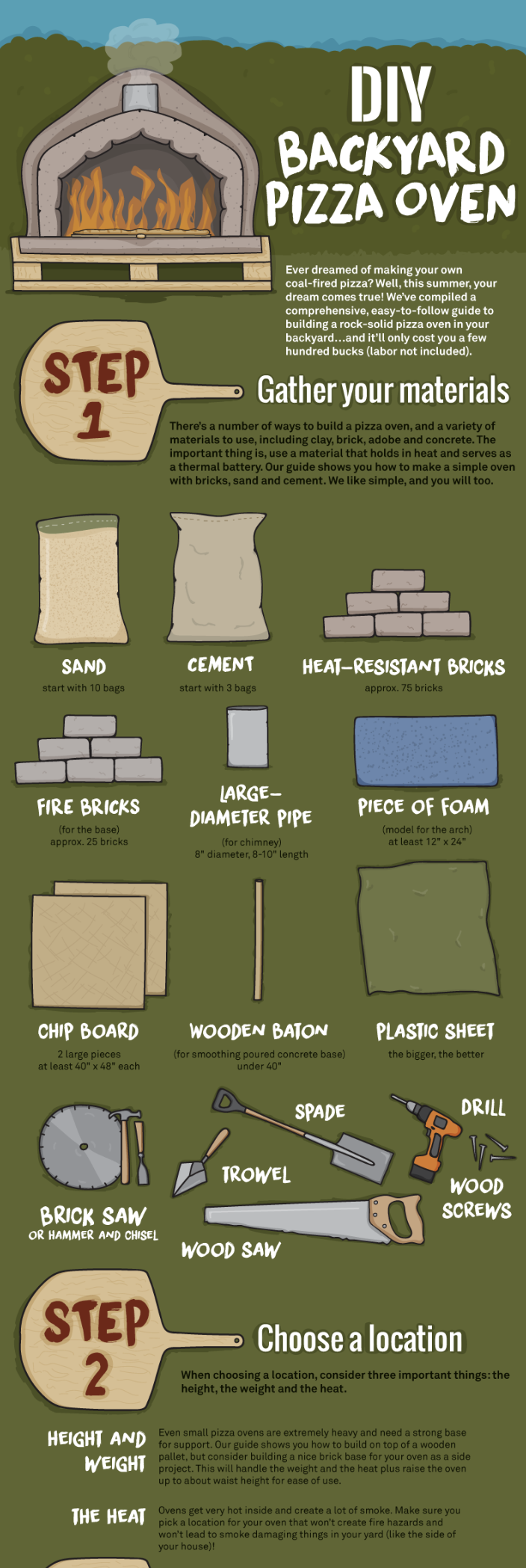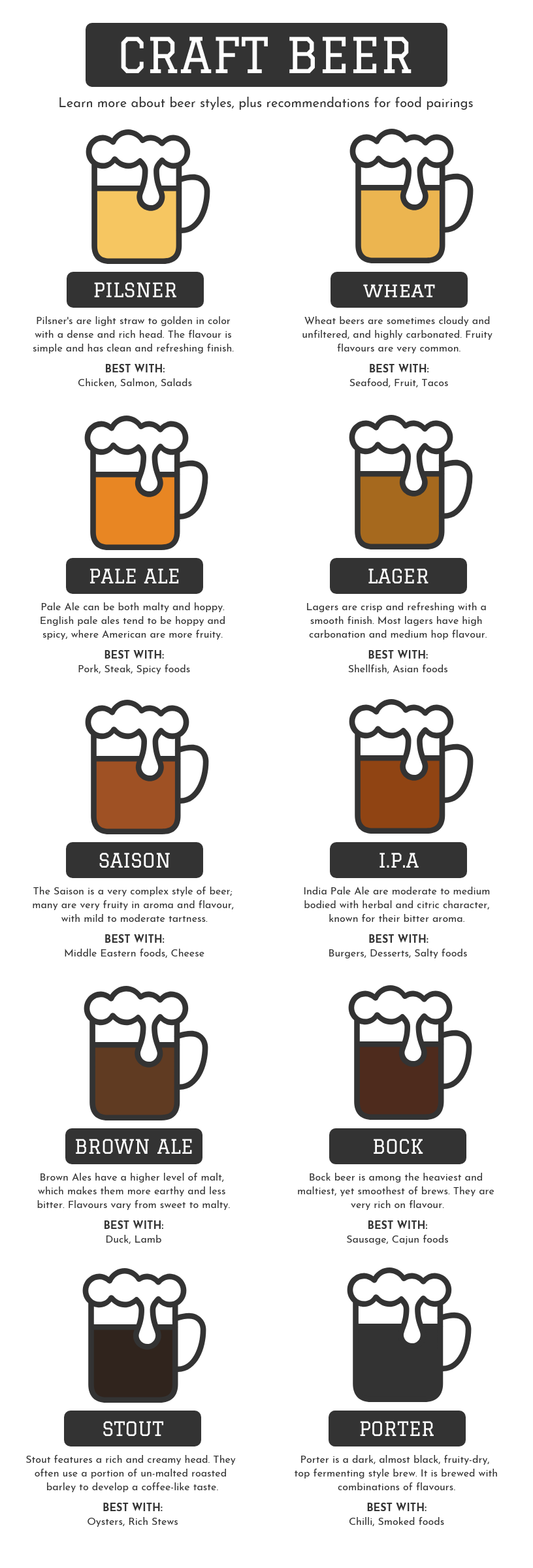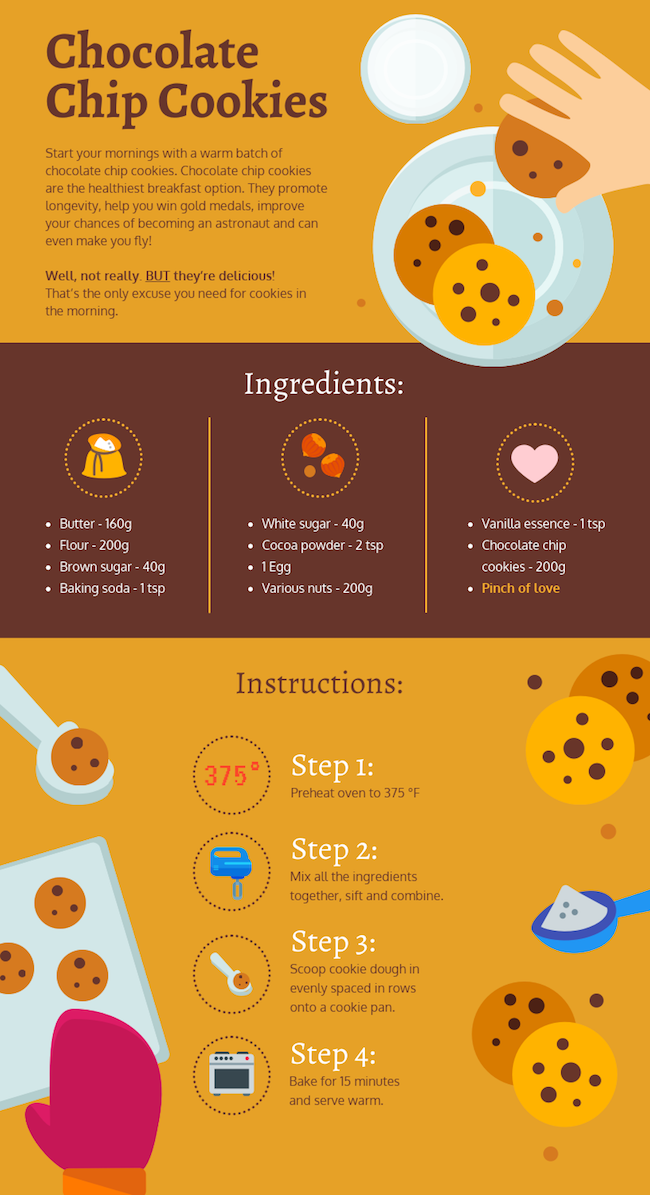 Everyone loves food.
Everyone loves food.
It’s a universal topic that literally anyone can get excited about.
However, I know that not everyone can be a gourmet chef. Some people even burn water.
But with these food infographics, you can definitely fake it ‘til you make it at your next dinner club. Some of these infographics can even help you actually learn how to cook!
Honestly, infographics were a big reason I learned to cook as well. Something about the visuals and the simple process got me excited about cooking.
So here are 30+ food infographics that can help you impress your foodie friends and a few tips on designing infographics. You can check out our extensive library of infographic templates to get started on your own infographic!
Bon appétit!
1. Use illustrated food icons for a whimsical look
Illustrated icons are big this year, and I don’t see that changing anytime soon. From food infographics, as you can see above, to posters, and even on social media.
In my experience, the illustrated icons help you add a fun or whimsical tone to an infographic. I mean, doesn’t the example above look like an interesting read? Yeah, that’s what I thought.
Plus, unlike flat icons, illustrated icons don’t have to look exactly the same or use the same color palette. They really only have the same style, like in the infographic above.
2. Add simple color variation to graphics or icons
You can create a successful food infographic by keeping the design and layout consistent. However, if every section looks exactly the same, your design can become boring rather quickly.
There still needs to be some variation that makes the reader want to continue reading. As you can see in the comparison infographic above, it really doesn’t need to be much.
In this food infographic, the designer uses ten different shades of the color brown. The varying colors take advantage of that urge that everyone has to know why they are all different. It may sound overly simplistic, but it works.
3. Create an informative recipe infographic with graphics and photos
In this roundup article, we have already seen a few food infographics with icon-focused designs – From flat icons to hand-drawn illustrations.
But for this recipe infographic, the designers decided to avoid icons altogether. Instead, they used real images of the foods to build their recipes. This approach makes it very easy for people to quickly see the ingredients for each dish.
4. Use a simple layout to help readers quickly compare foods or ingredients
You want to make it easy for people to get the information they are looking for on your infographic. simple column or block layout can help immensely.
For example, this food infographics uses a simple block layout to compare different herbs. The style makes the information consistent and easy to scan.
Additionally, use icons, bullets, or lists to make it super easy to follow!
5. Make icons the focal point of each idea or section
When creating a food infographic, icons can be extremely useful. So don’t forget to include them! They can be used to add some context, spice up the design, and inject some of your brand culture into the infographic.
Or like in this infographic example, be the main focal point for each section. These ten flat icons show the readers where to look from the beginning. Each icon helps readers navigate from one section to the other.
However, if you want to follow this example, be sure to use the same type of icons. Mixing illustrated with flat icons can make your design look cluttered and inconsistent.
6. Visualize food proportions or ratios with a pie chart

This boldly colored food infographic decided to embrace the classic pie chart (mmm, pie). They opted to put a slight twist on the charts, but I love it.
The designer visualized all of the data and info in a wholly unique way. And when it comes to food infographics, a compelling visual is always a plus.
You can quickly turn something that looks like a term paper or spreadsheet into an interesting read. So when you are working on your food infographic, look for interesting design approaches like this!
7. Design a paring infographic for two or more popular foods

Some foods just taste better together. Peanut butter and jelly. Milk and Oreos. Coffee and donuts. You get the picture.
In this food infographic, the creators decided to pair up two classic foods: beer and pizza. This infographic will appeal to both the pizza and beer lovers, which I’m guessing have a large overlap.
Additionally, this infographic example is almost the opposite of a comparison infographic. Instead of comparing two food groups, you are finding the examples that work together.
8. Blend real food photos with interesting typography

Adding bold typography to a flat photo is a technique that I saw used in poster designs first. This approach can be used in almost any design project, including infographics.
In the example above they blend the real and digital world to create a special graphic.
Now the reader can easily visualize all the ingredients, and how much they need rather quickly. A simple recipe card wouldn’t have the same effect at all. Or blow up on social media, like this food infographic did.
9. Pick a color palette that matches your topic
When it comes to creating infographics, using the right color palette is often overlooked. And I think this is a huge mistake.
Mostly because you can say so much with a few colors. And set the tone of the infographic instantly based on a certain combination.
How odd would this health infographic look if the creator would have used a red or blue color palette? Something would feel off from the beginning.
Instead, because they used a green palette, which is often associated with nature and life, the infographic fits the topic perfectly.
10. Have a little fun with your food infographic

Cooking is supposed to be a fun activity, I know that eating always is.
You should try to keep that in mind when you are creating a food infographic. This example from Simple Happy Kitchen definitely got the memo.
This infographic design is pretty simple. There’s nothing wrong with that, but there needs to be something that grabs the reader’s attention. In this case, the playful visualizations of each food does the trick.
11. Mashup your food infographic with a trending topic

One of the best ways to create a viral food infographic is to mashup two related topics. We actually use this idea to create some of our own infographics, articles and content. This allows you to pique the interests of both groups of readers with one solid infographic.
In this example, they decided to mashup successful business leaders and breakfast.
With almost everyone eating breakfast at one point in their life, that audience is huge. Then add that to the instant name recognition these leaders have and you have a winning infographic.
12. Use color psychology in your infographic design

In a previous tip, I talked about the power of a great color palette, but this one is a little different. Whereas the other tip dealt with a single color palette, this example illustrates how to use past experiences with colors quite well.
For example, you probably can already tell that the blue side of the infographic is going to be positive. And the red is negative. That’s usually how these colors are used, so why would this case be any different?
13. Create a “Choose Your Own Adventure” menu

There are literally thousands of ways to eat a dish. Even something as simple as milkshakes. And I’m guessing not many people like it exactly the same as their friends.
Plus, making decisions is hard.
That’s why I really like that this food infographic uses a flowchart to break down a ton of potential options. Now I just need to an infographic like this at every restaurant and I’m set.
Create your own menu using our drag and drop online menu maker tool.
14. Use a column layout to create visual symmetry in your infographic design

Humans are big fans of symmetry. We are basically drawn to it because our brains are lazy.
You can use this to your advantage pretty easily when designing a food infographic, like in the example above.
Each column uses three icons and three ingredients. This symmetry makes the infographic visually appealing to readers, and easy to read.
So when it comes time to create your own infographic, be sure to keep symmetry in mind.
15. Feature food hacks that anyone and their mom can benefit from

Everyone love life hacks. Some of these hacks are so simple that they make great visual infographics.
In this food infographic example, they illustrate a handful of helpful cooking tips using, well, a hand. Each hack is simple enough that anyone could use it, and want to share it with their friends. Plus, the colorful design elements make it easy to skim.
16. Number the steps in your recipe infographics

Many food infographics are actually visualizing a recipe or process. This means that the infographic is going to use a series of steps to finish that process. It’s your job, as the designer, to make sure that those steps are easy follow.
Clearly number the steps in your recipe to make it easier to follow. You can also use bold fonts and icons to make sure no one misses a step.
In this recipe infographic, I like that the designer included sub-points under each step to clarify the instructions.
17. Use an area chart to proportionally break down recipes

I’m a math nerd at heart. A hungry nerd. So I really like when people break down recipes like they did in the infographic example above.
The designer used an area chart to explain what each drink is made of. Now you can instantly see what each drink contains, and how much of each ingredient.
Now if you hate one flavor or ingredient, you can quickly cross that off your list as well.
18. Illustrate the history of a popular food with a timeline infographic

People love learning about the origin of things, which is why timeline infographics are so popular. In fact, some of our most popular blog posts and templates on Venngage feature a timeline infographic.
As you can see in the food infographic above, the designer visualized the history of french fries and ketchup. With each side playing off the other to weave a fascinating story.
If this info was presented in any other way, I’m confident that it wouldn’t have been as interesting. Or easy to read.
19. Use a timeline to visualize cooking time

As you can see above, timeline infographics are pretty versatile. They can be adapted to fit a lot of different situations. Including, showing how cook time will affect a particular food.
Because the right cook time is so important most dishes, this data visualization forma could be used for a lot of recipes. From steaks, to cakes and everything in between.
20. Create a minimalist recipe infographic

Many people think that minimalist infographics should only use black, white or neutral colors. I don’t blame them. Apple has pushed that idea for the past decade or so.
But minimalism doesn’t equal a lack of color. A minimalist design uses only what it needs, and no more.
This food infographic is a perfect illustration of colorful minimalism. Each icon, header and description fits together well. There is no wasted space or energy in the whole graphic.
I would recommend using this approach to visualize simple recipes, like they do above.
21. Use simple and consistent iconography throughout your infographic

With a smart icon usage you can build an easy-to-follow map on your infographic.
This is very useful if your design does not conform to a traditional layout, like in the example above. In this food infographic, there are a bunch of random points spread around the graphic. Without icons the reader wouldn’t know where to look next.
But because the each point is paired with a related icon, you can effortlessly jump from one to the other. Also the icons add some positive and negative context to each point, before you even read it!
22. Feature hand-drawn icons, graphics and illustrations in your infographic design

Hand drawn illustrations are another design trend that has exploded over the last year or so. Honestly, I think this is a reaction to the flat cookie cutter icons that were everywhere a few years ago.
Like with illustrated icons, hand-drawn graphics can add some playfulness to any infographic. They can also make your food infographic feel like it was created by a real person, not a faceless company.
As you can see above, they can help your brand own the infographic as well. No one else is going to take the time or effort to create something similar. Plus, when you are trying to stand out on social media, unique content always wins.
23. Use a mind map to show how food or drinks are related

When there are hundreds of variations of an item, a mind map can help you keep it all organized.
Honestly, how else would you explain how all the wine above is related? I guess, you could make a list or spreadsheet. But does anyone really want to read that? Probably not.
So I would recommend using a simple mind map to organize your food or drink infographics. As you can see from the example above, hundreds of items can be effectively visualized on a single mind map.
24. Grab their attention with a bright and bold color scheme

There are a lot of things to like about this food infographic from Ziploc. From the innovative design, to the simple illustrated icons. However, my favorite part is the bold color scheme used throughout the infographic.
These bold colors are very eye-catching, especially when viewed on social media. These days most social sites use a white background, which helps the bold colors explode off the page.
When you have literal seconds to make an impression on a reader, that can make a huge difference. Plus, each section may use a different color but they all feel similar. This can simply be attributed to the bold color usage as well.
25. Start with a vibrant background image for your food infographic

If you want to upgrade your infographic background, I would take a look at the example above.
First, they already have a well-designed infographic to start with. But the related background image makes the whole thing extremely eye-catching. Especially because the background image fits the topic (strawberries) so well.
This is something that will make a reader stop in their scrolling tracks and want to learn more about the topic.
26. Use a classic list infographic format for recipe infographics

Turning a recipe into an infographic is extremely simple, especially if you use a list infographic. All you really have to do is copy the steps in the recipe to the infographic template. Then add a few icons, graphics or embellishments, and you are done!
As you can see in the example above, the perfect apple pie recipe was added to this stunning infographic.
The creator really could have used a simple recipe card or bulleted list for this pie. But I think they wanted their recipe to really illustrate how good that pie was. And I appreciate that!
27. Draw attention to a section with a contrasting background color
If you really want a section to stand out from your infographic, use a contrasting background color. I’m not saying use neon green or electric pink, but look for something that will help that section stand out from the background.
In the infographic above, they clearly want the Ingredients section to stand out, and the contrasting color gets the job done.
This approach can be added to a food infographic to highlight ingredients, nutritional facts or anything you don’t want the reader to miss.
28. Avoid including too much information on longer infographics

This infographic is rather long, there’s no other way to say it. It may actually be the longest one in this whole roundup. However, it doesn’t really feel overwhelming when you look at it.
I believe this is because the designer didn’t try to include too much information.
This food infographic could have turned into a mess if they tried to add extra facts to each section. Instead, they chose briefly inform the reader that the foods contained a certain vitamin.
This is a great example of “less is more” when it comes to infographic design.
29. Design an eye-catching infographic header

The header of your infographic is going to be the first thing most people see. So ensure they won’t miss your infographic by designing an interesting header. Something that pulls their eye directly to the title of your food infographic.
The designer of this food infographic example does that extremely well. First, they started with an interesting but related background image. Then they added an extra bold font.
Finally, they use a white background for the rest of the infographic, making the header really pop.
30. Break down a complicated process with a flow chart

We have already briefly talked about using a flowchart in your food infographic. But that fun example only had a few options.
What if you want to create an infographic that breaks down a more complicated process? A flow chart has you covered as well!
As you can see in the infographic above, they break down how to pick a bottle of wine in a humorous way.
When there are millions of options, like with wine, that process can become problematic rather quickly. So I would recommend using a flow chart to keep it all organized.
31. Never count out a helpful cooking cheat sheet infographic

I love cooking cheat sheets. They help novice and veteran chefs keep their head on straight in the kitchen. From the ones that break down a complicated process to the simple ones that help convert measurements. Like this one!
These cheat sheets can also be transformed into a food infographic as well. Actually, I think an infographic is this is the best format for a cheat sheet.
The example above could easily be printed out and hung up in a kitchen. Added to a Pinterest board for later. Or even saved to your phone, so you always have it.
And there you have it! Over 30 food infographic tips that should help you create the perfect food infographic!
Some of my favorite infographic design tips included:
- Create a compelling recipe infographic with graphics and photos
- Visualize food proportions and ratios information with a pie chart
- Use a color palette that matches your topic
- Mashup your food infographic with a trending or popular topic
- Use a column layout to create visual symmetry in your infographic design
- Illustrate the history of a popular food with a timeline infographic
- Feature hand-drawn icons, graphics, and illustrations
- Grab their attention with a bright and bold color scheme
- Avoid including too much information on longer infographics
- Stick with the classic list infographic for recipe infographics
Now everyone should be able to whip up a dish or infographic from these examples!
If you would like some more inspiration for your food infographics I would check out our Inspiration Gallery:













































